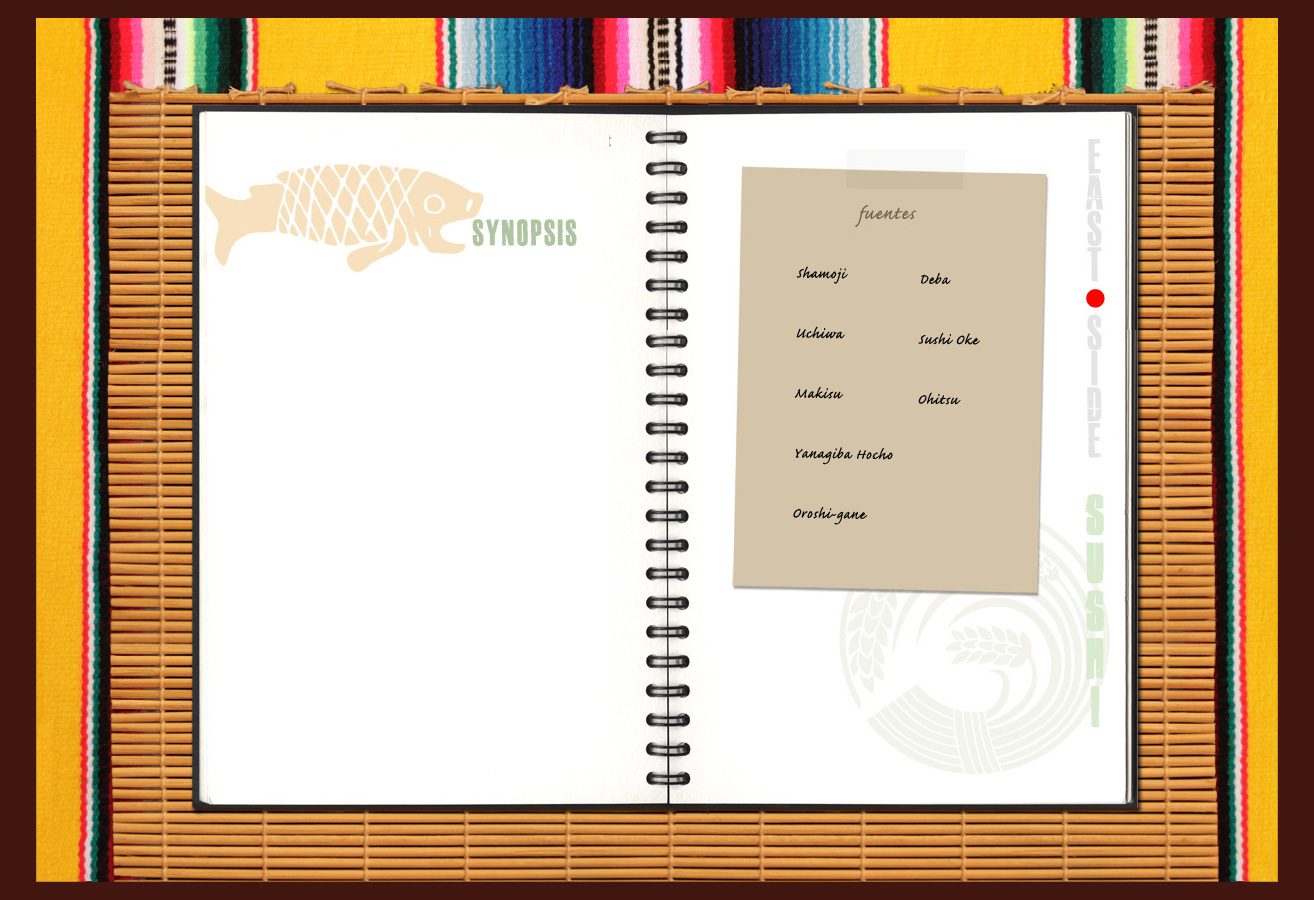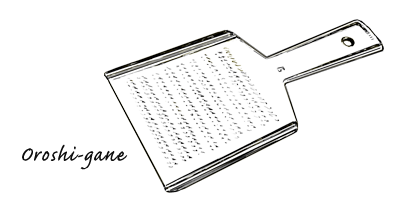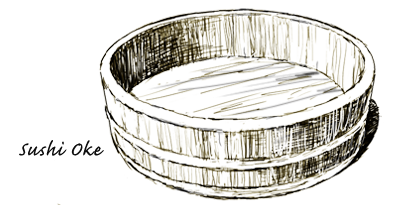
Tub often made of Japanese Cypress designed as a
container to keep steamed rice warm at the table.



The traditional Japanese kitchen knife for Sashimi and
sushi making. "Yanagiba” means "The leaf of a willow."


Japanese grater that keeps the grated
material on the grating surface.

Traditional wooden mixing tub
used for making sushi rice.

Mat woven from bamboo and cotton string that is .
commonly used to make a rolled sushi called makizushi.

Flat paddle utensil used to mix vinegar
into the hot rice for sushi.

East•Side Sushi introduces us to Juana, a working-class
Latina single mother who strives to become a sushi chef.
Years of working in the food industry have made Juana’s
hands fast—very fast. She can slice and dice anything
you throw at her with great speed and precision. Forced to
give up her fruit-vending cart in order to find a more secure
job, Juana lands a position as a kitchen assistant at a local
Japanese restaurant. It is there she discovers a new
friendship and a whole new world of cuisine and culture,
far-removed from everything she has ever known.
While working in the restaurant’s kitchen, Juana secretly
observes the sushi chefs and eventually teaches herself to
make a multitude of sushi. Her creativity sparked, Juana’s
re-ignited passion for food drives her to want more from
her job and her life.
Eventually she attempts to become a sushi chef, but is
unable to because she is the “wrong” race and gender.
Against all odds, she embarks on a journey of self-discovery,
determined to not let anyone stop her from achieving
her dream.